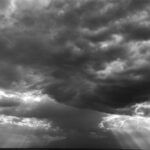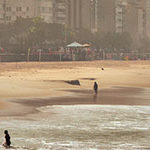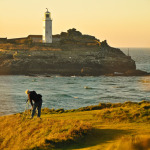The flash unit is a very sophisticated device, yet very valuable to the outdoor photographer. Sometimes nature just does not provide the best light and using flash can improve it. Whether you need flash in combination with the natural light or need to create light where there isn’t any, this book is designed to cover all those topics. Found here: Outdoor Flash Photography eBook & Pocket Guide
In a perfect world, every photograph we take would have perfect light resulting in the perfect photograph. However, as you know there is nothing perfect in our world, including the conditions in which we photograph
Each day we are presented with light in some form, which tells us about the conditions around us. The type and quality of light tell us a lot about our surroundings, such as temperatures, time of day, atmospheric conditions, or the shape and texture of the land we are about to photograph.
Most photographers begin using available light, and while this light provides much of what we need to capture photographs, the limitations of our tools may prevent us from capturing the image the way we saw it. Our eyes see differently than our cameras!
While high ISOs combined with today’s software allows photographers the ability to transform images in amazing ways, the ability to replicate natural light, and all the highlights and shadows, on the computer is difficult at best. Fortunately, the flash unit has been around for a long time and continues to be one of the most useful tools for outdoor photographers.
Flash allows us to bring more light to our scenes and subjects. It can be the dominant light source or a secondary light source. It can be used to weaken the contrast created by the natural or ambient light, or it can be used with other flash units to create light where none exists.
The Nikon SB900 and Canon 580EXII are covered in great detail from the LCD to the buttons so you will understand what they all mean.
“In this book (109 pages), we will closely examine how flash works with your camera and explore techniques to improve your photographs and open up new creative options. Once you understand the principals behind flash, you will discover that using one is really quite simple allowing you to apply these principals using your particular camera system.” -Author Charlie Borland
Charlie Borland has been a professional photographer for over 30 years. He has won numerous awards for his photography and photographed for many outdoor related clients and been published thousands of times including: National Geographic Adventure and Traveler, Outside, Women’s Sport and Fitness, Newsweek, TV Guide, CIO, Sports Illustrated for Women, Time, Backpacker, Sunset, American Photo, Outdoor Photographer, Eco Traveler, and many more.
How to get the eBook & pocket guide:
The guide comes in PDF format that can be read on computers, phones and most tablet computers (works great as a mobile reference out in the field).
Found here: Outdoor Flash Photography eBook & Pocket Guide
Like This Article?
Don't Miss The Next One!
Join over 100,000 photographers of all experience levels who receive our free photography tips and articles to stay current:








Leave a Reply